53% of American adults say that worry and stress over the COVID-19 pandemic have negatively affected their mental health. If you’re already trying to fight opioid addiction, this additional stress can feel overwhelming.
Telemedicine is one way to maintain or start a rehabilitation program during the pandemic. Virtual visits with health care providers can give you the support you need to safely continue your recovery. Find out how you can take advantage of the benefits that telemedicine offers.
The Growth of Telemedicine
Telemedicine uses electronic communications and software to provide clinical services when the provider and the patient aren’t physically in the same place. Telemedicine delivers health care services remotely. The terms telemedicine and telehealth are generally used interchangeably.
Telemedicine has seen rapid growth over the last decade. Insurance claims for telehealth increased by 53% from 2016 to 2017. The COVID-19 pandemic has caused telemedicine to grow even faster.
Health care providers can use telemedicine to provide primary, acute, chronic, and specialty care. Several options are available for delivering telehealth, including live (synchronous) videoconferencing, store-and-forward (asynchronous), remote patient monitoring, and mHealth.
Live Videoconferencing
Live (synchronous) videoconferencing is a two-way audiovisual connection between you and your health care provider. The patient typically uses a smartphone, tablet, or computer. Videoconferencing also lets two providers communicate with each other.
Store-and-Forward
Store-and-forward technology is asynchronous. Messages, images, or data are collected for interpretation and response at a later time. The exchange can be between providers or between you and your provider.
Remote Patient Monitoring
In remote patient monitoring, mobile medical devices collect your clinical measurements and transmit them to a remote caregiver. Data could include your blood sugar level or blood pressure.
mHealth
The term mHealth (“mobile health”) refers to applications and programs on mobile phones and other smart devices that support improved patient health. Text message reminders or applications to help manage blood pressure are some examples.
In addition to these types of telemedicine, a simple phone call is also a form of telehealth. You and your health care provider have a range of options when incorporating telemedicine into your care plan.
Benefits and Challenges of Telemedicine
Telemedicine has many advantages, but it also poses several challenges. It’s an efficient way to deliver treatment that works. Privacy concerns and lack of insurance reimbursement are two of the potential problems.
Benefits of Telemedicine
Patients benefit from convenient access to health care services. You don’t need to spend time or money going to an in-person appointment. People who have difficulty getting to a doctor’s office because they live in remote locations, are homebound, or can’t take time off work can access care remotely. Increased access to care is especially noticeable when you need to see a specialist. You aren’t limited to the specialists available in your area.
Patients feel more engaged when they use telemedicine with their doctors. You’re more likely not to miss an appointment. You’re more committed to your health goals with your doctor’s encouragement.
Your doctor is more available. You can ask questions more easily, report any symptoms that you’re concerned about, and check to be sure you’re on track. You can address any issues more quickly than if you had to wait for a traditional in-person appointment.
Challenges of Telemedicine
Your health care providers need equipment and training to build a telemedicine program. You may not have access to all the services you need as they transition to a telemedicine platform.
As with any technology, problems can occur while you’re using telemedicine. You either need an internet connection or cellular data to use most features of telehealth. If you live in an area with poor connectivity, you may have trouble accessing services.
Privacy is also a concern with telemedicine. The Health Insurance Portability and Accountability Act (HIPAA) regulates the treatment of your protected health information. Most consumer video platforms aren’t secure enough to meet HIPAA standards. You’ll need to use the secure video service that your doctor provides for telemedicine. You should follow any instructions your health care professional gives you regarding the security of your devices and your data.
Getting insurance reimbursement for telemedicine can sometimes be complicated. Only 16 states mandate payment parity for private payer insurance. Payment parity means that payment by your insurance will be the same as for in-person care. However, 40 states and the District of Columbia have put policies in place to expand coverage and reimbursement for telemedicine. Be sure to check with your insurance to find out what if any telemedicine services they reimburse.
Telehealth isn’t appropriate for all medical procedures. You and your doctor may prefer the in-person experience. Telemedicine options have many advantages, though, and they are often worth exploring.
Telemedicine During COVID-19
The COVID-19 pandemic has caused many health care providers and organizations to encourage the use of telemedicine. The Centers for Disease Control and Prevention (CDC) and the US Department of Health and Human Services (HHS) recommend telemedicine as a way to protect patients and doctors.
Clinicians can screen patients for COVID-19 symptoms before they go to the emergency room or a doctor’s office. If you are self-quarantining, you can keep in touch with your doctor at all times.
Telemedicine is also useful for medical issues beyond COVID-19. If you are unable to see your health care provider in person due to the pandemic, telemedicine enables you to maintain your treatment schedule. Staying on track with your appointments is especially important if you are managing a chronic condition or addiction.
Medicare, Medicaid, and some commercial insurance plans have changed their payment policies for telemedicine in response to COVID-19. Your telehealth treatment is more likely to be covered.
Access to telemedicine is growing as health care providers adapt to the current pandemic situation. Your options for medical care will continue to increase.
Telemedicine for Addiction Rehabilitation
Telemedicine has a particularly important role to play in addiction rehabilitation. Even before COVID-19, remote rehabilitation services offered many benefits to patients. Now remote access is even more necessary.
The scale of the opioid addiction crisis in the US means that there aren’t enough professionals to treat the patients who need help in many parts of the country. States with a large rural population like Ohio are among the hardest hit. Telemedicine gives you more providers to choose from. You can access fight opioid addiction where and when it’s convenient for you.
Using telehealth for your recovery program means you avoid any stigma. You don’t need to explain where you’re going or what you’re doing like you might for an in-person program.
Addiction Rehabilitation During COVID-19
During the COVID-19 pandemic, telemedicine offers additional benefits. Addicts often have compromised immune systems and are more likely to get sick from COVID-19. Telehealth lets you get the help you need without putting your health further at risk.
Feeling lonely and isolated can make substance abuse and mental health issues worse. Telemedicine keeps you connected to your health care provider and other recovering addicts if you participate in an online group therapy program. Studies show that telemedicine for addiction rehabilitation reduces depression, increases patient satisfaction, and improves quality of life.
Medication-Assisted Treatment (MAT)
One highly effective form of treatment that telemedicine can deliver is medication-assisted treatment (MAT). Medication-assisted treatment prescribes methadone, buprenorphine, naloxone (Vivitrol), or Suboxone (buprenorphine and naloxone) to reduce opioid use. It lowers the risk of dying from an overdose by up to 50%.
Medication-assisted treatment combines medication with support group meetings and sessions with counselors. The sessions focus on changing habits, learning healthy ways to cope with stress and triggers, and getting support.
Studies show that medication-assisted treatment is just as effective via telemedicine as through in-person programs.
If you started a medication-assisted treatment program and now can’t see your doctor in person because of the COVID-19 pandemic, telemedicine can help you continue your recovery. Maintaining your treatment plan is especially important with medication-assisted treatment to avoid the possibility of withdrawal symptoms.
If you’re ready to start your recovery but aren’t sure how you can get to a doctor, telehealth could be the answer.
Choosing a Telemedicine Addiction Rehabilitation Program
In the era of COVID-19, telemedicine is a better option for addiction recovery than ever. You want a program that gives you the best resources and the most support to help you succeed.
Recovery Delivered offers medication-assisted treatment with weekly virtual check-ins. Your medication is delivered to you or your local pharmacy. You have access to hundreds of addiction counselors online and cognitive behavioral therapy (CBT) through our app. We accept most insurance.
Your program with Recovery Delivered starts with an in-person medical evaluation. This step ensures your safety when you begin treatment. You can evaluate at your home or at almost any urgent care provider. A prescribing doctor will join the local team via video chat. After the health evaluation, you’ll follow our at-home detox with daily support over video chat. Throughout your medication-assisted treatment, you have weekly follow-up meetings online with your prescribing doctor. We’re with you every step of the way.
Download the app and start your rehabilitation journey.
We also offer the following online medical services:


